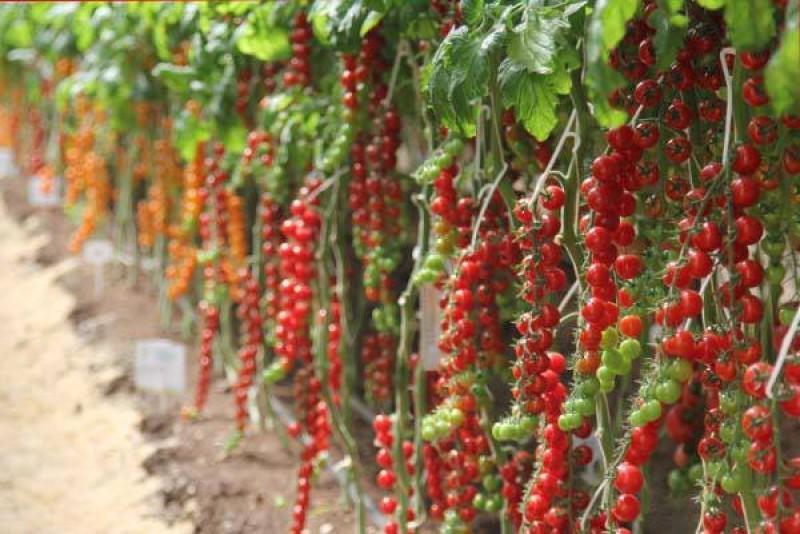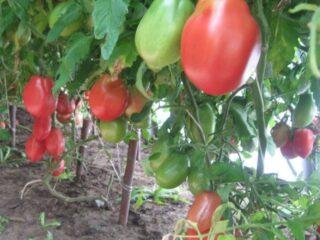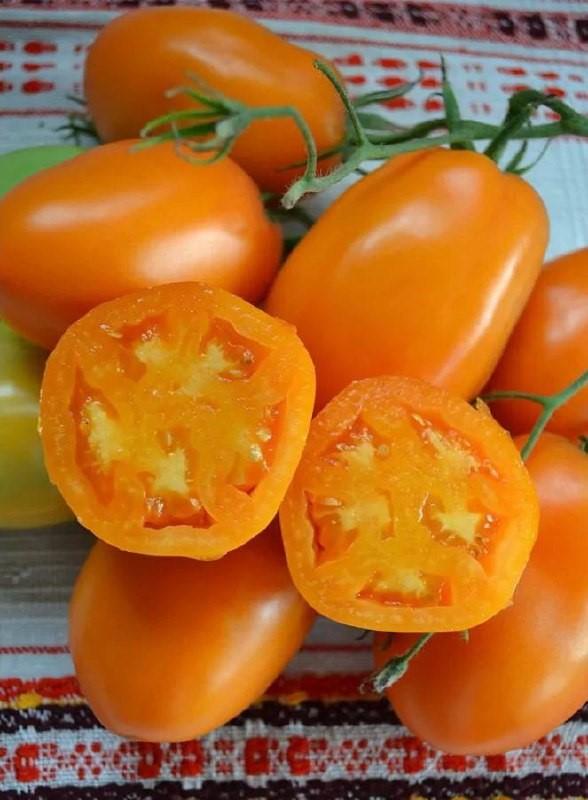Content
Thanks to the hard work of breeders, gardeners have a huge selection of tomato varieties that can be grown in their gardens. The Raspberry Fountain tomato is one of these crops. Despite its comparative youth, it has managed to prove itself to be high-yielding, disease-resistant and unpretentious. Tomatoes can be grown in open ground and in greenhouses.
Breeding history
The originator of the variety is Agrofirm Poisk. The variety was approved for use and entered into the State Register in 2002. But this date was preceded by many years of painstaking work by several breeders A. N. Khovrin, S. V. Maksimov, V. V. Korchagin, T. A. Tereshonkova.
Description of the tomato variety Raspberry Fountain
Characteristic features of the Raspberry Fountain tomato variety:
- determinant;
- F1 hybrid;
- early ripening (100-105 days);
- cultivation is possible in the garden, under a film cover, in a greenhouse;
- miniature fruits 20-27 g;
- strong immunity.
It is advisable to form tomato bushes into 1-2 stems and tie them up. Fruiting is consistent - until the end of the season. Each subsequent harvest is characterized by a decrease in fruit size.

Raspberry fountain tomatoes contain large amounts of serotonin, which improves mood
Characteristics of tomato Raspberry fountain
Among gardeners, the name “fingers” or “cherry” has been assigned to the Raspberry Fountain tomato. These are small bright red fruits with a raspberry tint. Clusters can be complex or simple, with 10-30 fruits.
The stalk is strong, so the tomatoes do not fall for a long time. The taste is characteristically tomato. The skin is elastic. Tomatoes are famous for their rich content of nutrients. To get the daily intake of vitamins C, A and group B, it will be enough to consume 5-7 fruits.
Fruiting period
Raspberry fountain tomatoes ripen 100-105 days after the first shoots appear. However, simultaneous harvesting should not be expected. Tomatoes ripen gradually on the bunch.
Tomato yield Raspberry fountain
The productivity of the variety is high. 6-7 kg of tomatoes are harvested from 1 square meter. But such a quantity of tomatoes can only be obtained if all agrotechnical practices are followed.
Resistance to diseases and pests
Breeders achieved good immunity for tomatoes when creating the variety.Raspberry fountain tomatoes are extremely rarely susceptible to the development of mosaic virus and are not prone to Fusarium wilt.
In what regions is it grown?
Raspberry fountain tomatoes are suitable for growing throughout the country. Good yields were noted even in the Urals, Siberia and the Far East.

Tomato seeds purchased from the originator do not require additional processing before sowing
Purpose
The variety can be safely called universal. Due to their small size, tomatoes are ideal for whole-fruit preparations. They are delicious eaten fresh and in salads. You can make ketchup, paste, and juice from tomatoes. Suitable for decorating alcoholic cocktails.
To preserve their taste for as long as possible, tomatoes are stored at a temperature of +15-18 OC, definitely in a dark place.
Advantages and disadvantages
Raspberry fountain tomatoes are ideal for canning whole fruits and have a pleasant taste. But these are not their only advantages.

By the end of the season, the tomatoes on the bush become smaller
Pros:
- do not crack on the bush and during storage;
- strong immunity with resistance to most diseases and pests of tomatoes;
- transportability;
- high yield.
Minuses:
- require shaping and gartering;
- The variety is hybrid, so you will have to buy seed material.
Landing Features
It is necessary to sow tomato seeds in the first ten days of the first month of spring. By mid-May, the seedlings are planted in a permanent place. It is necessary to take into account the weather characteristics of the growing region; sowing is carried out 55-60 days before transferring to the garden or greenhouse.The soil is disinfected before placing seeds in it; the seeds do not require any additional preparation. Until the first shoots appear, maintain the temperature at +25-26 °C using plastic film. The seeds are immersed in the soil by 10-15 cm, in increments of 2-3 cm. They are sprinkled with earth and moistened.
Basic requirements for growing tomatoes:
- formation of 2-3 stems;
- regular application of fertilizers (1-2 times for 30 days);
- landing in a sunny place;
- the soil must be fertile;
- predecessors can be: green manure, pumpkin crops, mustard or greens;
- Every 10 days it is necessary to carry out stepsoning.
Seedlings are planted from each other at a distance of 0.5 meters, 70 cm must be left between the beds. The depth of the holes is 25 cm with a diameter of at least 5 cm. Planting is carried out with a clod from a seedling box. It is immediately recommended to provide supports to which the plants will be tied. Formation of a tomato bush is carried out in two or three stems.

You can make your own soil for seedlings from sand, peat and vermiculite
Care instructions
The Raspberry Front tomato, like most tomatoes, prefers a humidity level of 60-65%. If cultivation is carried out in a greenhouse, then it is necessary to constantly maintain the temperature at +20-25 OC. When active fruit formation begins, it is advisable that it does not fall below +24 OC. We must not forget that the greenhouse must be regularly ventilated so that condensation does not destroy the tomato plantation.
The bushes should be watered regularly, but under no circumstances should they be over-watered. It is recommended to feed tomatoes every 10-12 days. For this, ordinary manure, organic and mineral mixtures are suitable. The main rule is not to overdo it with adding nitrogen, so that late blight does not “wake up” and the leaves begin to grow uncontrollably.
The soil in the root zone is periodically added, as it settles over time. We must not forget about regular stepsoning; shoots of 1.5-2 cm are left at the place where the stepchildren are cut, so that they do not draw back nutrients for their development.
In order for the crop to ripen quickly, after most of the fruit has formed on the ovary, the crown must be pinched and all flowering clusters removed.
Pest and disease control
Even the strongest immunity of tomatoes does not always cope with severe waterlogging; there is always a risk of developing late blight. Fitosporin, Bordeaux mixture for spraying, is used as a preventive measure.

A tincture of garlic and potassium permanganate will help get rid of late blight.
If the problem cannot be avoided, you will have to resort to more serious drugs - Ridomil Gold, HOM. As a last resort, if these remedies do not produce results, the damaged bush will have to be removed along with the roots and must be burned.
Conclusion
The Raspberry Fountain tomato is a young but already popular hybrid. Gardeners love it for its small fruit, pleasant taste and ease of care. But there are some drawbacks - the variety is a hybrid, so you won’t be able to collect seed material yourself.
Reviews from gardeners about cherry tomatoes Raspberry fountain








